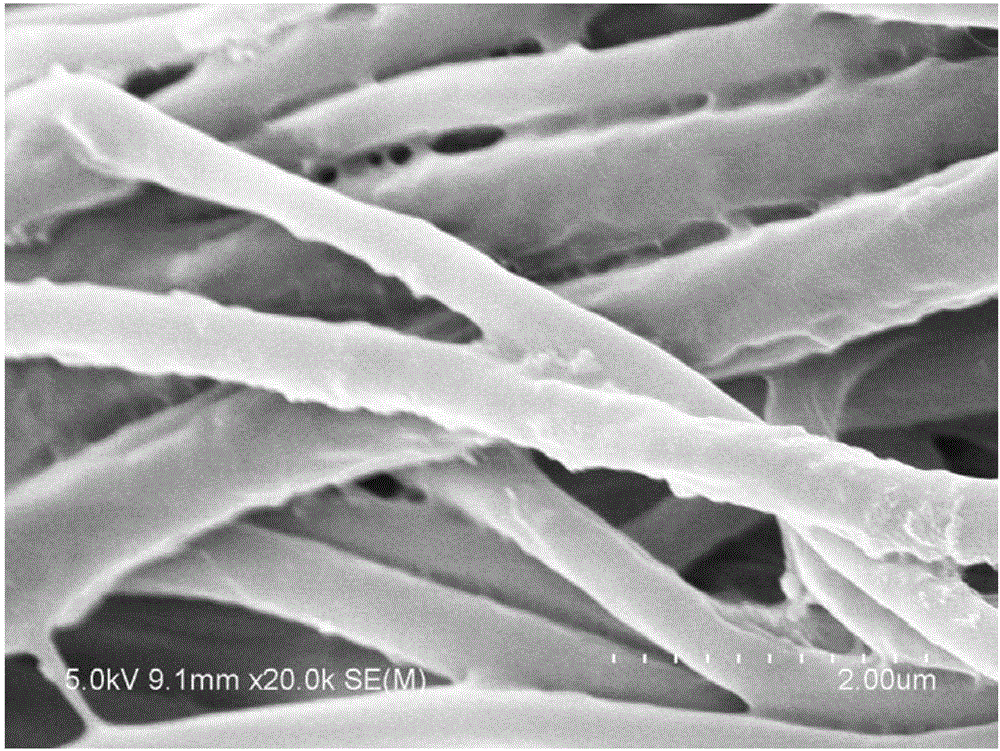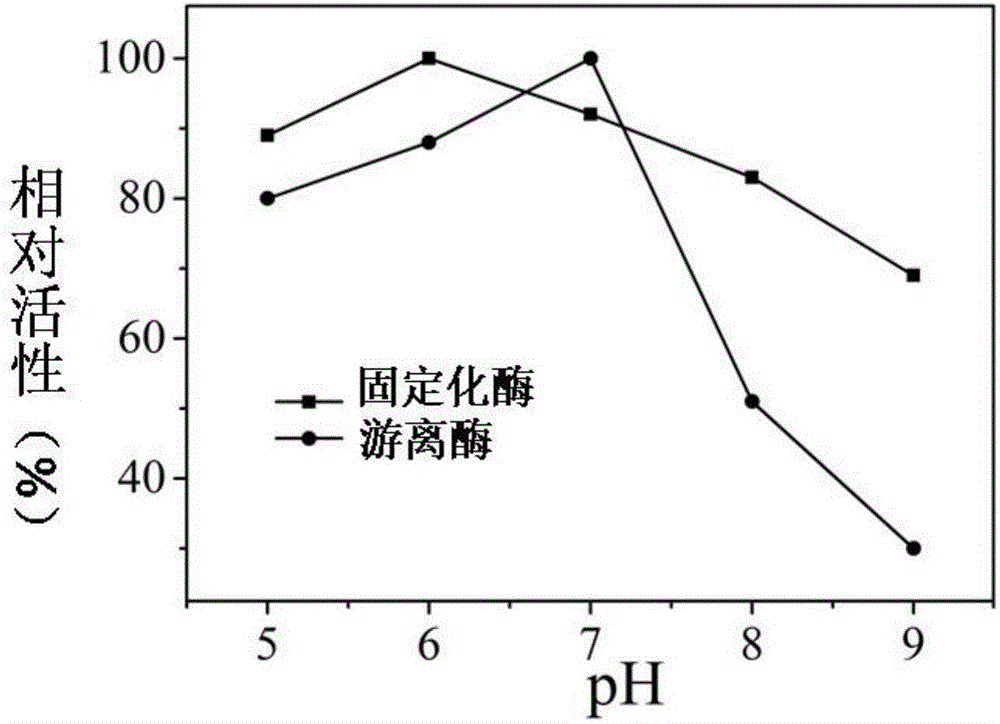Preparation method of hyaluronic acid blended nanofiber immobilized enzyme
A nanofiber, hyaluronic acid technology, applied in the direction of fixing on/in organic carriers, fiber processing, fiber chemical characteristics, etc., can solve the problem of providing a mild microenvironment, easy shedding of modified materials, and poor biocompatibility and other problems to achieve the effect of improving biocompatibility and water retention, good water retention performance and high porosity
- Summary
- Abstract
- Description
- Claims
- Application Information
AI Technical Summary
Problems solved by technology
Method used
Image
Examples
Embodiment 1
[0039] A preparation method for immobilizing enzymes in hyaluronic acid blended nanofibers, comprising the following steps:
[0040] (1) Configuration of hyaluronic acid solution
[0041] Measure 1.5mL of DMF solution and 1.5mL of distilled water into a test tube, weigh 4mg of sodium hyaluronate solid with an electronic balance, add it into it and dissolve to obtain a sodium hyaluronate solution.
[0042] (2) Configuration of PMA-AA binary interpolymer
[0043]Dissolve 2mL of acrylic acid and 14mL of methyl acrylate in 40mL of N,N-dimethylformamide (DMF), add 0.2-0.3g of azobisisopropionitrile, fill with nitrogen gas for 10-12min, and place at 60-80°C Heat in a constant temperature water bath and react for 15 to 24 hours to obtain a viscous, transparent and uniform PMA-PAA solution. (3) Configuration of spinning precursor
[0044] Measure 5mL of PMA-PAA solution and add 3mL of sodium hyaluronate solution, and shake fully to obtain the spinning precursor solution.
[0045] ...
Embodiment 2
[0051] A preparation method for immobilizing enzymes in hyaluronic acid blended nanofibers, comprising the following steps:
[0052] (1) Configuration of hyaluronic acid solution
[0053] Measure 1.5mL of DMF solution and 1.5mL of distilled water into the test tube, weigh 4mg of sodium hyaluronate solid with an electronic balance, add it and dissolve to obtain a sodium hyaluronate solution.
[0054] (2) Configuration of PMA-AA binary interpolymer
[0055] Dissolve 2mL of acrylic acid and 14mL of methyl acrylate in 40mL of N,N-dimethylformamide (DMF), add 0.2-0.3g of azobisisopropionitrile, fill with nitrogen gas for 10-12min, and place at 60-80°C Heat in a constant temperature water bath and react for 15 to 24 hours to obtain a viscous, transparent and uniform PMA-PAA solution.
[0056] (3) Configuration of spinning precursor
[0057] Measure 5mL of PMA-PAA solution, add 0.5mL of sodium hyaluronate solution, and shake fully to obtain the spinning precursor solution.
[005...
PUM
 Login to View More
Login to View More Abstract
Description
Claims
Application Information
 Login to View More
Login to View More - R&D Engineer
- R&D Manager
- IP Professional
- Industry Leading Data Capabilities
- Powerful AI technology
- Patent DNA Extraction
Browse by: Latest US Patents, China's latest patents, Technical Efficacy Thesaurus, Application Domain, Technology Topic, Popular Technical Reports.
© 2024 PatSnap. All rights reserved.Legal|Privacy policy|Modern Slavery Act Transparency Statement|Sitemap|About US| Contact US: help@patsnap.com










